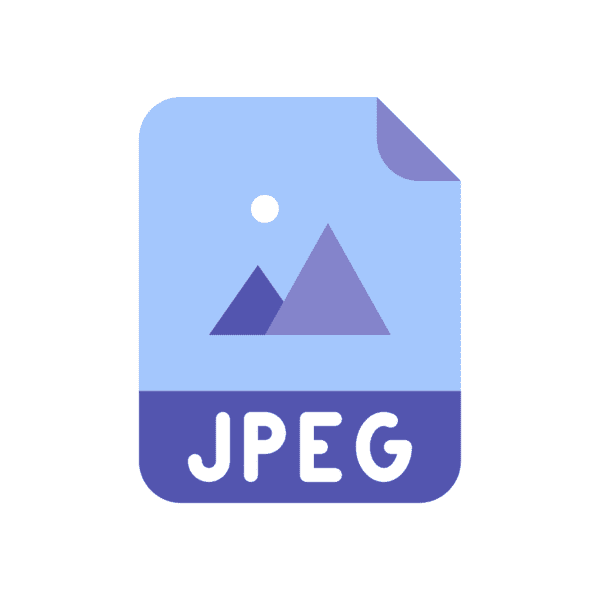Images improve user experience and are important for SEO. High-quality visuals attract your audience and increase engagement. Did you know that seo image optimization can also improve your website’s search engine rankings?
What is Image Optimization?
Image optimization refers to the process of adjusting your images to meet specific criteria that enhance both user experience and search engine performance. This includes reducing file sizes without compromising quality, adding relevant metadata, and ensuring quick load times.
Optimized images contribute to faster page load times, which is a significant ranking factor for search engines. Additionally, optimized images improve accessibility, making your content more user-friendly. Search engines reward websites that offer a better user experience, meaning image optimization can directly impact your SEO rankings.

Preparing Images for SEO
Finding the Right Image for Your Content
Choosing the right image starts with relevance. Ensure that the visuals you select align with your content and add value to your message. High-quality images that resonate with your audience can significantly enhance engagement and SEO performance.
Best Practices for Image Sourcing
Always source images from reputable platforms to maintain quality and legal compliance. Stock photo websites like Shutterstock and Unsplash offer a wide range of high-quality images. Alternatively, consider creating custom visuals to make your content stand out.
Ensuring Image Relevance and Quality
Relevance and quality go hand-in-hand when it comes to image optimization. Use images that are directly related to your content and maintain high resolution. Blurry or irrelevant images can turn off visitors and reduce your site’s credibility.

Optimizing Image File Sizes
Resizing Images for Web
Large images can slow down your website, impacting both user experience and SEO. Resize your images to fit the dimensions required by your website layout. Tools like Adobe Photoshop and online services like TinyPNG can help you resize images without losing quality.
Choosing the Right Image Format (JPEG, PNG, WebP, etc.)
Different image formats serve different purposes. JPEG is ideal for photographs due to its balance between quality and file size. PNG is better for images requiring transparency. WebP offers excellent compression and quality, making it a great choice for web use.
Selecting the Optimal Compression Rate
Compression reduces file size but can affect image quality if overdone. Tools like ImageOptim and TinyPNG offer various compression levels, allowing you to find the perfect balance between size and quality.
Embedding Images in HTML
Using HTML Image Elements Correctly
Proper HTML image tags are essential for SEO. Always use the `<img>` tag to embed images, and include attributes like `src`, `alt`, and `title`. This ensures your images are indexed correctly by search engines.
Utilizing Responsive Images with srcset and sizes Attributes
Responsive images adjust their size based on the user’s device, improving load times and user experience. The `srcset` and `sizes` attributes allow browsers to select the best image size, ensuring optimal performance across all devices.
Lazy Loading Images for Improved Page Speed
Lazy loading delays the loading of offscreen images until the user scrolls to them. This technique can significantly improve page load times and enhance user experience. Implement lazy loading using JavaScript libraries like LazyLoad.
Leveraging WebP and Other Next-Gen Formats
Next-gen formats like WebP offers superior compression and quality compared to traditional formats. Browsers increasingly support these formats, making them a viable option for image optimization. Using WebP can drastically reduce file sizes without compromising quality.
Image Metadata Optimization
Creating Descriptive Filenames
Descriptive filenames help search engines understand the content of your images. Use relevant keywords and avoid generic names like “image1.jpg.” For example, “blue-widget.jpg” is more informative and SEO-friendly.
Crafting Effective Alt Text for SEO and Accessibility
Alt text describes the content of an image for screen readers and search engines. Include relevant keywords naturally, but avoid keyword stuffing. Effective alt text improves both accessibility and SEO, making your content more inclusive and search-engine-friendly.
Example: For an image of a chocolate cake, use alt text like “Delicious homemade chocolate cake with strawberries on top” instead of just “cake.”
Optimizing Image Titles and Captions
Image titles and captions provide additional context for users and search engines. Use descriptive, keyword-rich titles and informative captions to enhance user experience and SEO. For example, instead of “IMG_1234,” use “Golden Sunset Over Mountain Range.” These elements can make your content more engaging and easier to index.
Utilizing EXIF Data for Image SEO
EXIF data contains information about how and where an image was taken. While not directly used by search engines for ranking, EXIF data can provide valuable context. Tools like Adobe Photoshop allow you to edit EXIF data, ensuring it aligns with your SEO strategy.
Structured Data and Schema Markup for Images
Adding Image Structured Data
Structured data helps search engines understand the content of your images. Adding image-related structured data can improve your chances of appearing in rich snippets and image search results.
Benefits of Structured Data for Image SEO
Structured data enhances your images’ visibility in search results, leading to higher click-through rates. It also provides additional context, helping search engines index your images more effectively.
Implementing Schema Markup for Images
Schema markup is a form of structured data specifically designed for search engines. Implementing image schema markup can improve your images’ SEO performance. Use Google’s Structured Data Markup Helper to generate and test your schema markup.

Image Sitemap Optimization
Creating an XML Image Sitemap
An XML image sitemap helps search engines discover and index your images. Include all relevant images in your sitemap and submit it to search engines to improve your images’ visibility.
Submitting the Image Sitemap to Search Engines
Submitting your image sitemap to search engines ensures your images are indexed correctly. Use tools like Google Search Console and Bing Webmaster Tools to submit your sitemap and monitor its performance.
Best Practices for Image Sitemaps
Follow best practices when creating your image sitemap. Include only relevant images, use descriptive filenames, and ensure your sitemap adheres to search engine guidelines. Regularly update your sitemap to reflect any changes to your image content.
Enhancing Image SEO with CDNs
Serving Images via a Content Delivery Network (CDN)
CDNs distribute your images across multiple servers worldwide, reducing load times and improving user experience. Using a CDN can also enhance your images’ SEO performance by ensuring faster delivery.
Benefits of Image CDNs for SEO and Speed
Image CDNs offer numerous benefits, including faster loading times and reduced server load. These improvements can positively impact your SEO performance, as search engines prioritize fast-loading websites.
Implementing an Image CDN for Your Website
Implementing an image CDN involves selecting a provider and configuring your website to use it. Popular options include Cloudflare, Amazon CloudFront, and Akamai. Follow the provider’s guidelines to ensure seamless integration.

Ensuring Mobile-Friendliness of Images
Optimizing Images for Mobile Devices
Mobile optimization is crucial for SEO, as more users access the web via mobile devices. Ensure your images are optimized for smaller screens, faster load times, and lower bandwidth. Use responsive design techniques to adapt your images to different devices.
Using Responsive Design to Improve Mobile SEO
Responsive design adjusts your website layout and images based on the user’s device. This approach improves user experience and SEO performance. Use CSS media queries and flexible grid layouts to implement responsive design.
Testing Image Performance on Mobile
Regularly test your images’ performance on mobile devices to ensure they load quickly and display correctly. Use tools like Google’s Mobile-Friendly Test and PageSpeed Insights to identify and fix any issues.
Advanced Image SEO Techniques
Using SVGs for Scalable Images
SVGs are scalable vector graphics that retain quality at any size. They are ideal for logos, icons, and other graphics that need to be sharp and clear. Use SVGs to improve your website’s visual appeal and SEO performance.
Implementing Image Caching Strategies
Caching stores frequently accessed images locally, reducing load times and server load. Implement caching strategies to improve your images’ performance and SEO. Use tools like Varnish and NGINX for effective caching.
Enhancing Image Accessibility for Better SEO
Accessible images improve user experience and SEO performance. Use descriptive alt text, captions, and titles to make your images accessible to all users. Accessible images can lead to higher engagement and better search engine rankings.
Measuring Image SEO Performance
Tools for Tracking Image SEO Metrics
Use tools like Google Analytics, SEMrush, and Ahrefs to track your image SEO performance. Monitor metrics like page load time, image search rankings, and user engagement to assess the impact of your image optimization efforts.
Analyzing the Impact of Images on Page Speed
Page speed is a critical factor for SEO and user experience. Regularly analyze the impact of your images on page load times using tools like Google PageSpeed Insights and GTmetrix. Optimize images to improve page speed and SEO performance.
Improving Image SEO Based on Performance Data
Use performance data to identify areas for improvement in your image optimization strategy. Regularly update and refine your images based on user feedback and analytics. Continuous improvement ensures your images remain optimized for SEO.
Our Case Study
At It’s My Digital, we helped an e-commerce client improve their product image visibility by using an XML image sitemap and an image CDN, which boosted their organic traffic by 40% in three months. This showed us the importance of making images easy to find and fast to access, leading to more engagement and sales.
On the other hand, a local restaurant learned from using low-quality stock images. Despite having a nice website, their bounce rate was high. We suggested custom photography to highlight their unique dishes, which improved both their website’s look and user engagement, leading to more online bookings.

In short, optimizing images is important for better SEO and user experience. Key tips: resize images, use the right formats, add descriptive metadata, and use responsive design.


